
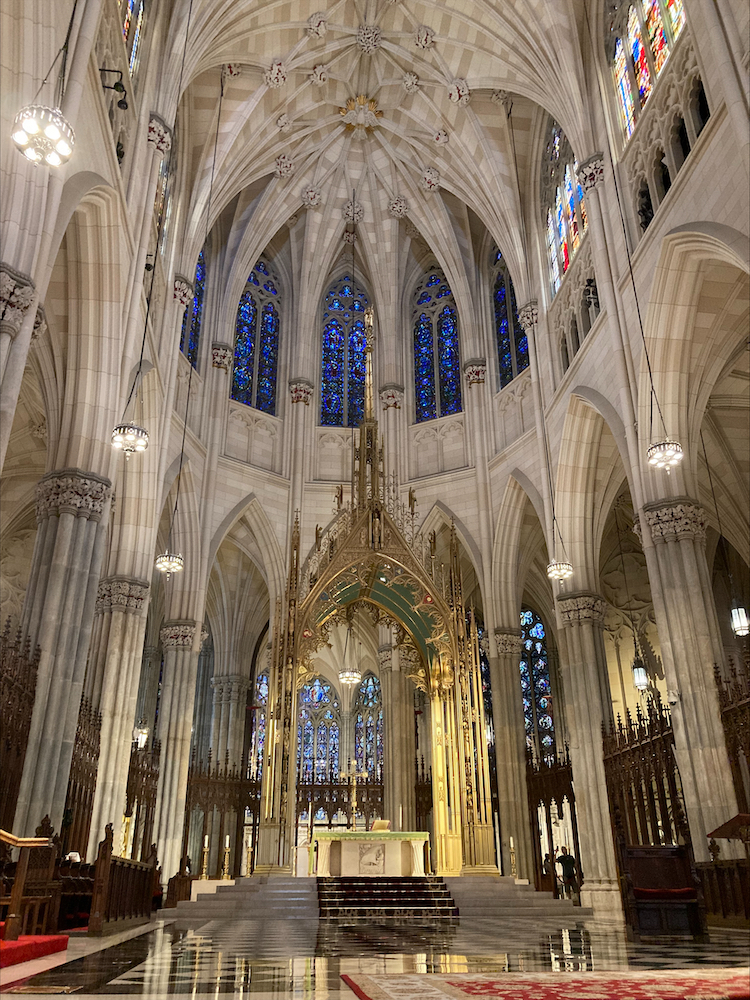
St Patrick's Cathedral in the nineteenth century, in the Library of Congress image collection. Interior: The east end, looking towards the sanctuary, High Altar and apse.
History of the Building
This famous Roman Catholic cathedral stands on Fifth Avenue, Manhatten, on the corner with 50th street. The architect was James Renwick (1818-1895), who was assisted by William Rodrigue (1800-1867). John Farley summarises its building history:
The site of the present St. Patrick's Cathedral was purchased in 1810, with the intention of building a college. In 1850 it was proposed that a cathedral be built, and in 1853 Archbishop John Hughes instructed the architect James Renwick to prepare the studies and designs. The cornerstone was laid in 1858. During the Civil War years construction was suspended, but finally the work was completed, except for the spires, in 1879. The spires were finished in 1888, the Lady Chapel in 1906. [152]
Architectural Style
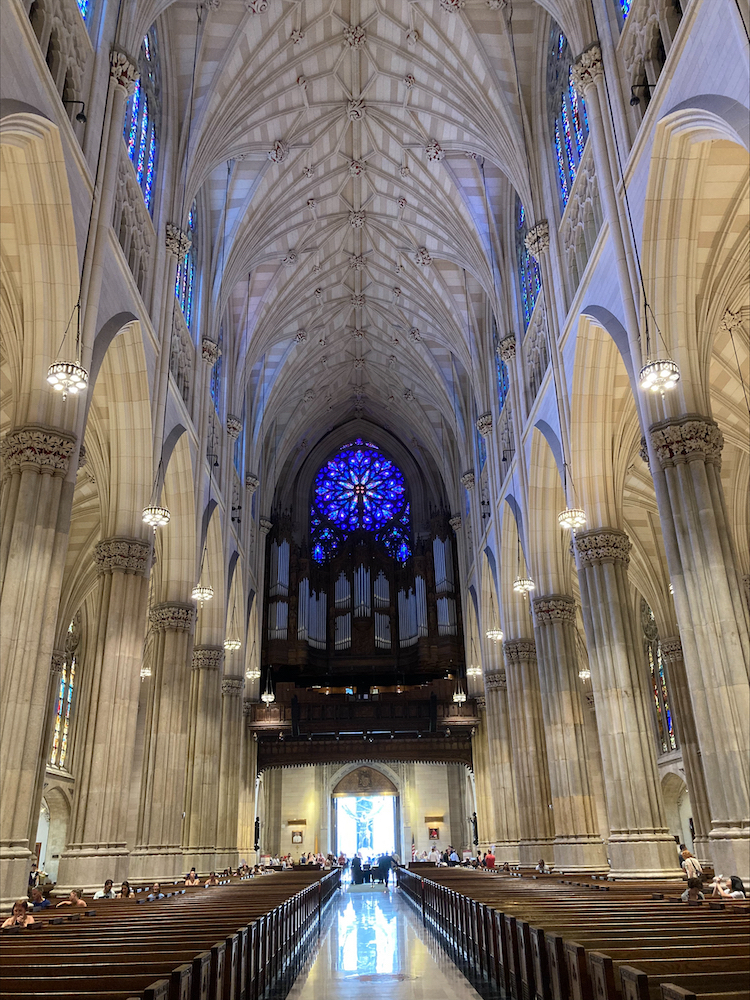
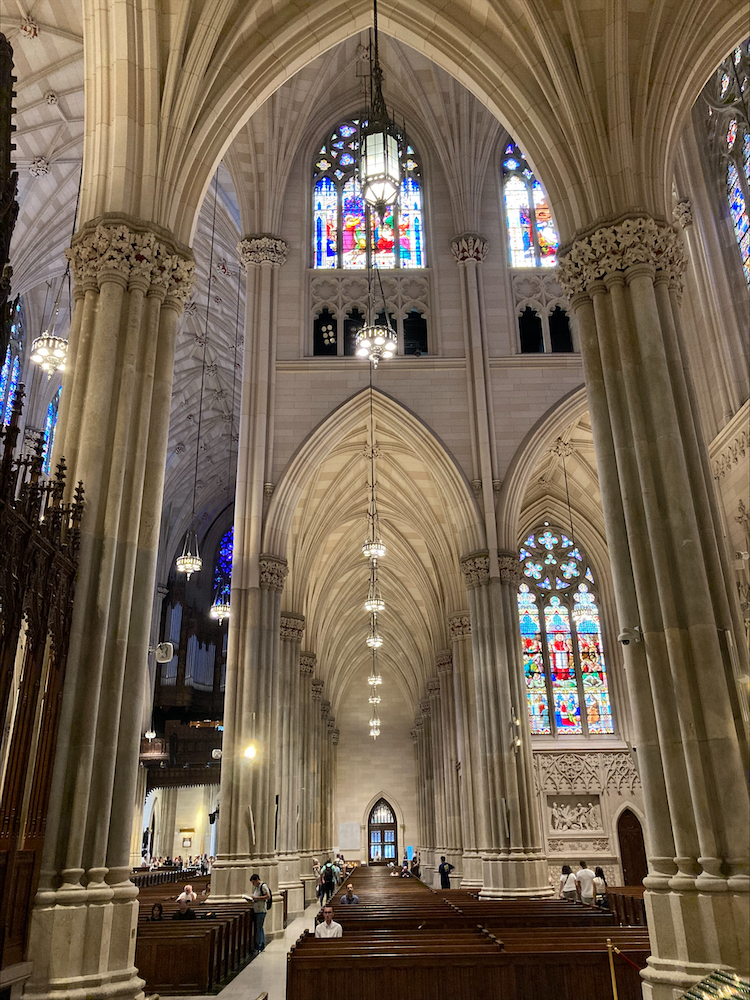
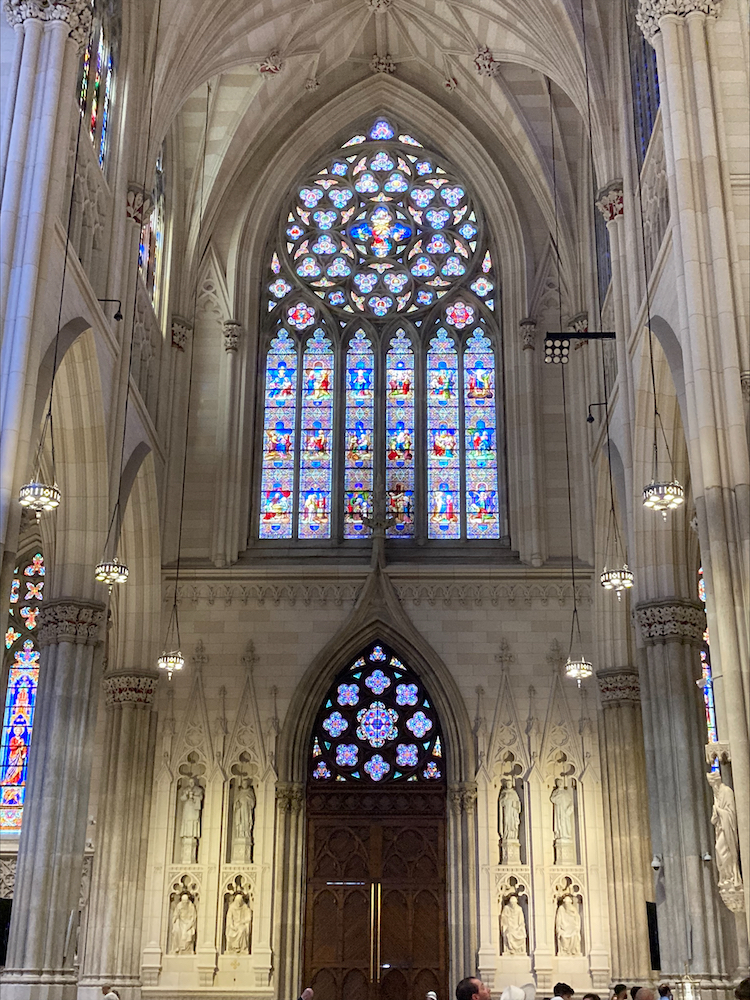
Left to right: (a) View west down the nave. (b) South side aisle. (c) View into the north transept.
The cathedral is of Gothic Revival style, harkening back to the period of the Middle Ages, as found in Europe (in Cologne Cathedral, for example) as well as in England. Nowadays, this ensures that the cathedral continues to have a distinct presence amid the surrounding structures of the busy commercial city.
Building Materials
The cathedral was built on granite, but "marble was chosen as the cathedral's main building material because of its unique light cream color.... St. Patrick's walls, towers, columns, and other key structures are made of marble. Much of this marble was quarried in New York and Massachusetts. However, the Lady Chapel was built using marble from Vermont" (Gregory 10, 14). Not only was the colour of the marble appealing, but its relative softness was ideal for the sculptural adornment that followed, and that is such a feature of both the façade and the interior.
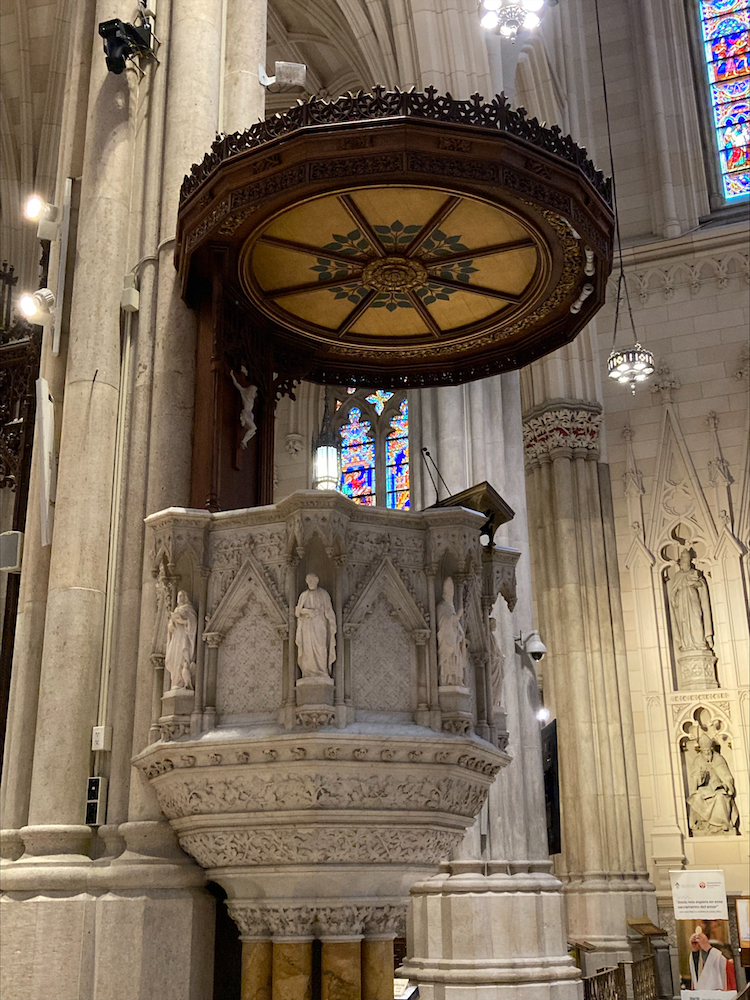
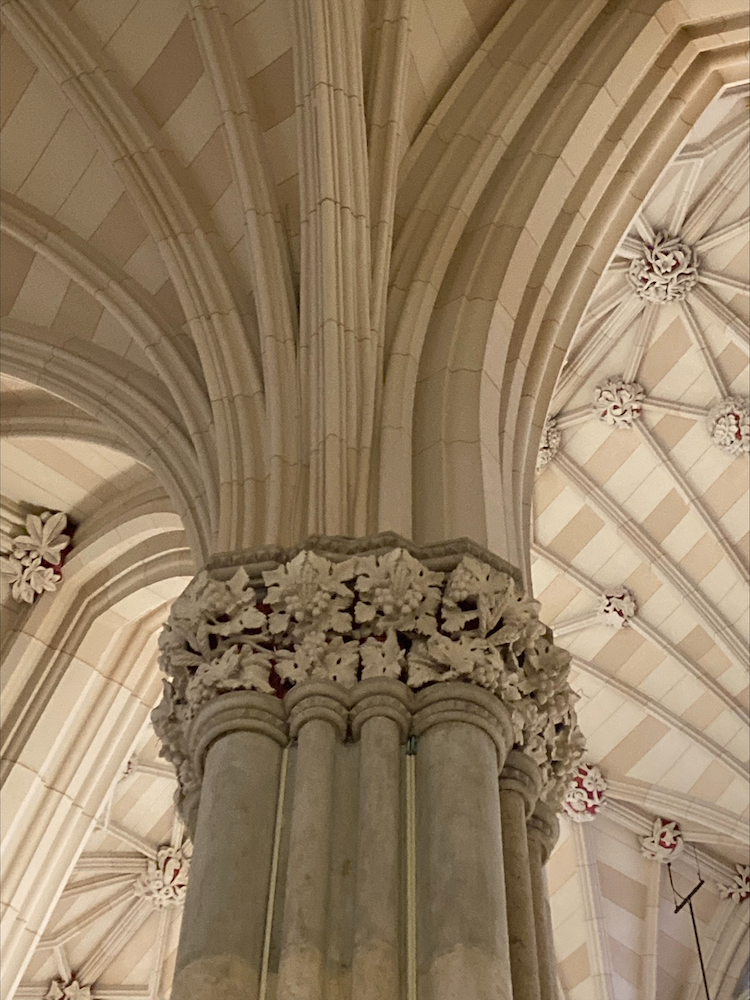
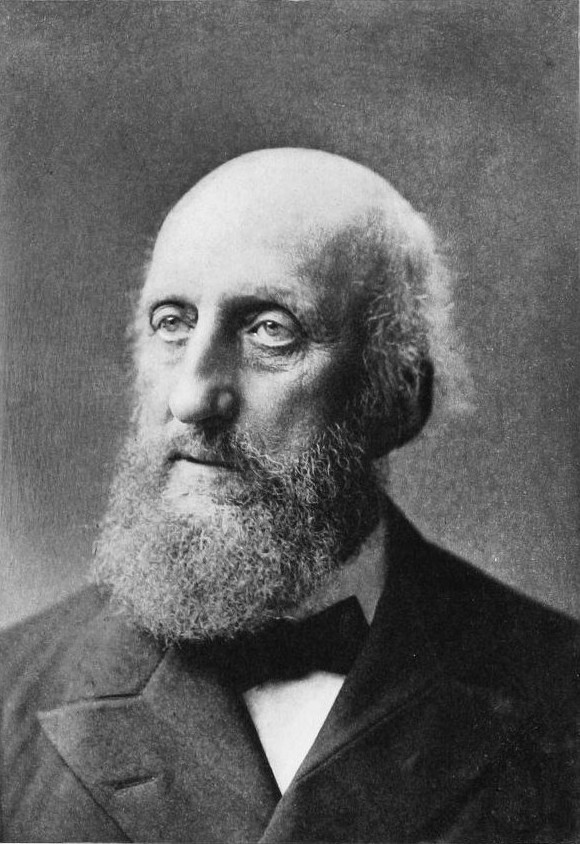
Left to right: (a) Pulpit with sounding board above it. (b) Decorative capitals. (c) The architect, James Renwick (Farley, facing p. 117).
The Architect
James Renwick, Jr., who was born in New York City in 1818, and graduated from Columbia College when he was only sixteen, started work as an engineer, but was drawn to the study of architecture and particularly the Gothic style, reading, among others, the work of A.W.N. Pugin. Renwick was only twenty-three when he designed Grace Episcopal Church. Travels in Europe confirmed him in his interest in the Gothic, and despite having had his Gothic vision for the Smithsonian rejected in favour of his Romanesque design, he drew up plans in this style for the cathedral in about 1853. "No father ever watched more tenderly over a favorite child than did Mr. Renwick over the building of the Cathedral. His love of art was enrooted in a deeply religious soul. The Cathedral, the grandest religious edifice in the United States, is a lasting monument to his genius. He died in 1895" (Farley 234, Appendix 3).
Photographs by Laurence Cooke, captions by Simon Cooke, and additional text and formatting by Jacqueline Banerjee. [You may use these images without prior permission for any scholarly or educational purpose as long as you (1) credit the photographer, and (2) link your document to this URL in a web document or cite it in a print one.]
Bibliography
Boderick, Robert C. Historic Churches of the United States. Wilfred Funk, 1958.
Farley, John Murphy. History of St Patrick's Cathedral. New York: Society for the Propagation of the Faith, 1908. Internet Archive. Web. 16 July 2024.
Gregory, Joy. St Patrick's Cathedral. New York: Weigl, 2016.
"New Cathedral of New York, Fifth Avenue, 50th & 51st Streets, commenced August 15, 1858, by the Most Revd. John Hughes, fourth Bishop & first Archbishop of New York, James Renwick Jr., William Rodrigue, Architects." Library of Congress. Digital ID: (digital file from original print) ppmsca 08902 http://hdl.loc.gov/loc.pnp/ppmsca.08902
Sturges, Walter Knight. “Renwick, Rodrigue and the Architecture of St. Patrick’s Cathedral, N.Y.C.” U.S. Catholic Historian 1, no. 2 (1981): 68–72. http://www.jstor.org/stable/25153646.
Created 18 July 2024